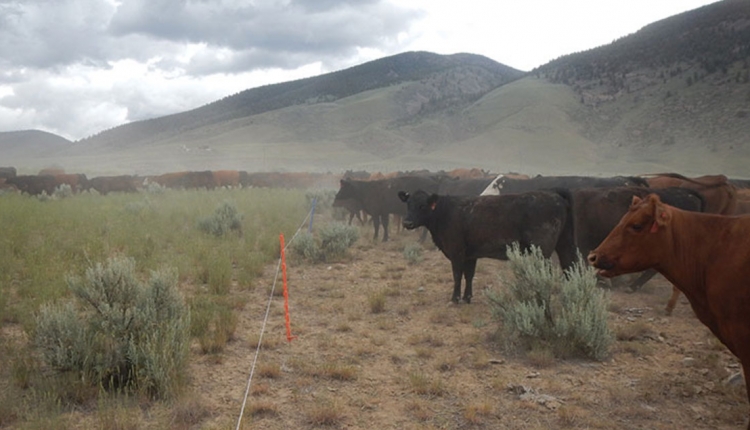The author is a rancher, author, speaker, and consultant with over 40 years of experience in grazing management research, outreach, and practice. He has lived and grazed livestock in hot, humid Missouri and cold, dry Idaho

Grazing management during the active growing season is largely about the plants and the soil. Our focus is maximizing solar energy capture and building soil health. If we accomplish these two objectives, animal performance is usually going to be satisfactory. The key management strategies to achieve these goals are short grazing periods and appropriate recovery periods.
I often emphasize the reason for short grazing periods during the growing season is because mostly negative things are happening to pasture plants during the grazing period: leaves are being eaten, photosynthesis is reduced, root growth pauses, and direct feeding of microbes via root exudates slows or stops. Thus, short grazing periods make sense during the growing season.
If short grazing periods are all about managing growing plant responses, why should we worry about maintaining short grazing periods through the winter months when plants are no longer actively growing? The answer lies with animal response.
The second line in the position description of a cow reads: Find the best bite of feed you can.
This describes the ability of grazing animals to selectively graze. The animal is always seeking out the most nutritious bite in the pasture. This is a key to survival. We can view selective grazing as either a negative or a positive. Let’s look at two scenarios for grazing stockpiled pasture or range in the dormant season.
In the first scenario we have a large field that looks like it should feed this herd of cows for a couple of months, so we just turn the herd out into the entire pasture. The cows look like they’re doing great for a few weeks but then we begin to see condition score begin to slip. A month into our winter grazing program it’s determined that a protein supplement is needed. What happened?
Because the cattle are highly motivated to find the best bite of feed they can, they seek out and select the highest protein plants in the mix. This is especially true if we have stockpiled warm-season grasses for our winter feed bank. It doesn’t happen as quickly on stockpiled tall fescue pastures, but it will eventually happen on most other stockpiled pastures. This is when we view selective grazing as a negative factor in grazing management.
Batch processing
Ruminant animals do not need to directly consume a protein supplement daily. On the other hand, monogastrics such as humans, hogs, and dogs need to consume intact protein each day. Ruminant digestion and nutrient processing are driven by the microbes in the rumen. This is more of a batch-processing system, where periodic addition of protein or even non-protein nitrogen keeps the microbes ticking along and taking care of business.
Research has shown that cattle fed a protein supplement every three or four days will perform just as well as if they had received a supplement every day. That brings us to the idea that strip grazing can be an act of protein supplementation. This is when selective grazing can become a positive management factor.
Rather than turning the herd into the entire pasture, we could choose to strip graze the field on a three-day basis. On the first day, the cattle will probably go over the entire strip and high-grade for the best protein and energy bites. The remaining two days on the strip, the rumen bugs are utilizing that burst of protein harvested on the first day. The bottom line is that we continue to use short grazing periods in the winter to budget out our limited protein supply in the pasture to manage rumen function more effectively.
Proven results
How realistic is this three-day strip grazing on dormant rangeland? We have many Western clients who have substantially reduced or eliminated their traditional protein supplement program by switching to time-controlled grazing on their rangeland. The cost savings for supplement per cow has ranged from about $20 to $60 per head. Most have also substantially boosted their number of grazing days and reduced days on full feed for further cost savings.
In some cases, the pastures have been permanently subdivided with one or two-strand electrified high-tensile fences. Most, however, are using temporary polywire fences to create the three-day grazing strips. With a two-mile spool of polywire mounted on the bed of a side-by-side and step-in posts, an experienced worker can set up a mile of fence in about an hour.
With a daily cost saving of 40 cents per cow per day, a herd of 300 cows saves $120 per day for a cumulative savings in the three-day period of $360. That’s not a bad wage for a couple hours of work.
This article appeared in the January 2022 issue of Hay & Forage Grower on page 14.
Not a subscriber? Click to get the print magazine.

